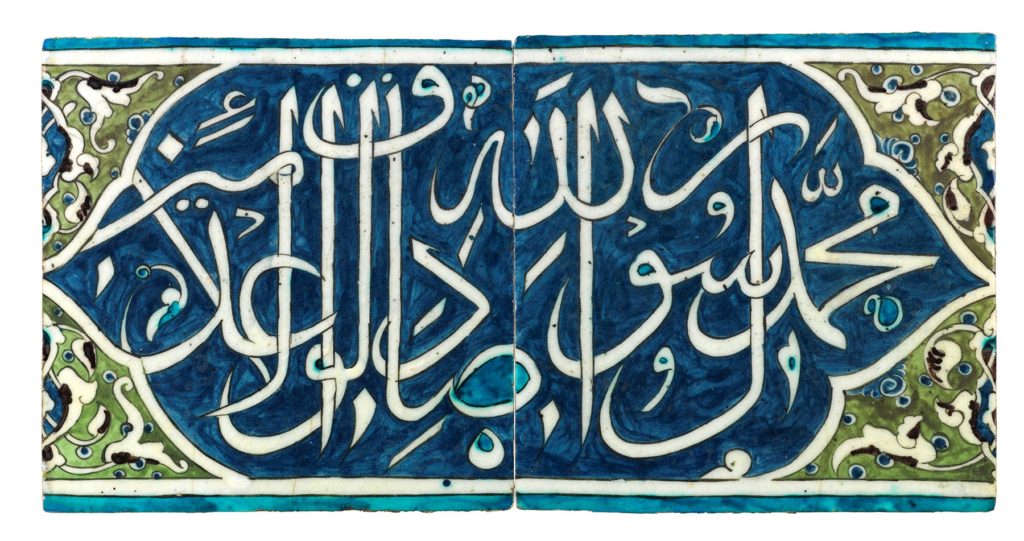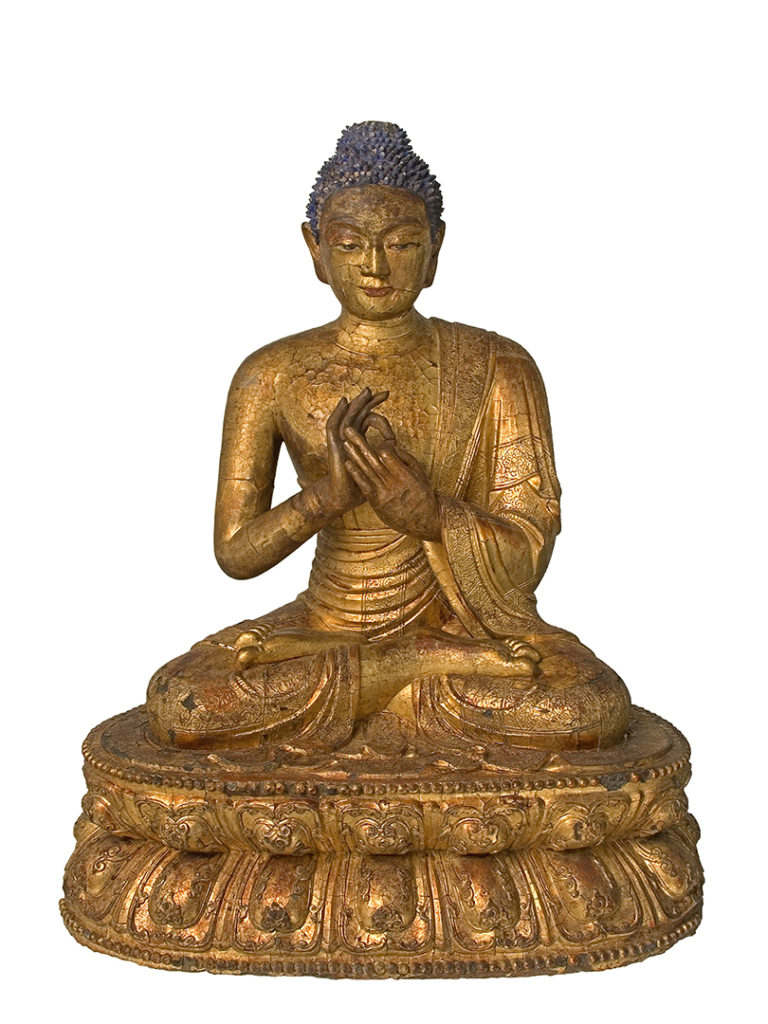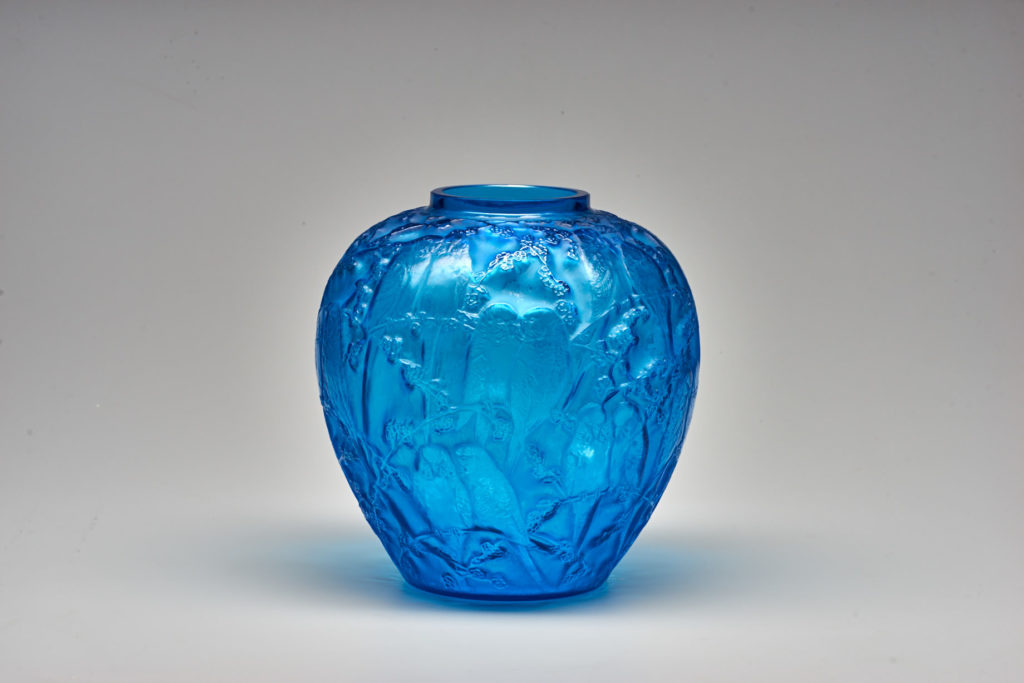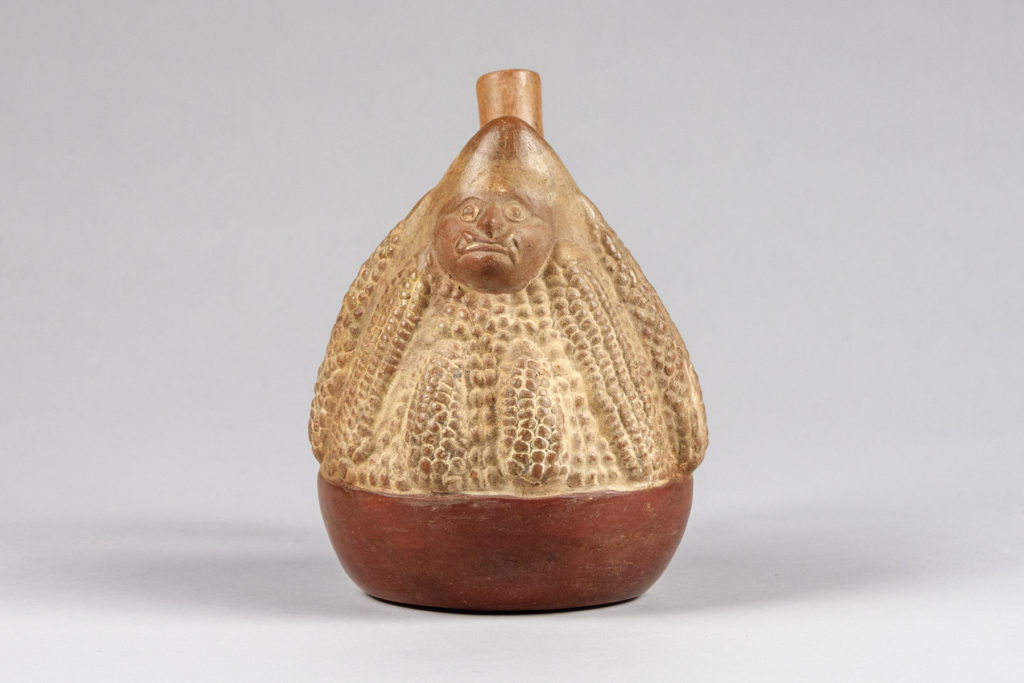The Decorative Experience highlights a small percentage of the museum’s Arts & Culture collection.
Objects in this gallery showcase artistry from American, African, Asian, European, and Indigenous cultures. The art that humans make, whether used in daily life or only for important events, is a powerful form of human communication. Religious motifs, coats of arms, political slogans, and embellishments added to objects evoke social, political, and religious feelings.
Recently, the McClung Museum has made changes in this exhibition as a part of a project called “Museum in Progress.” The museum houses some objects that were collected without consulting source communities appropriately. We are taking steps to rectify this by removing sensitive objects from display and providing additional context about artists. This effort is ongoing in the The Decorative Experience gallery and throughout the museum as we continually update our best practices, make visible ignored or untold stories, and highlight vibrant and living cultural traditions.
Upon entrance to the gallery, the first and second cases are devoted to objects from Africa. Providing colorful backdrops are two large textiles; one, a large section of cloth from the Fante people, Ghana; and the other, a large Zemmour rug from Morocco. Other items in the case come from Sudan, the Democratic Republic of the Congo, Zimbabwe, Uganda, Ethiopia, and Mali.
The third case is one of four on China and is dominated by a large stone sculpture of two Buddhas dating to the Northern Wei dynasty (AD 326–535). Included in this case are a Neolithic jar (ca. 2400 BC) and a painted ceramic warrior figure from the Han dynasty (206 BC–AD 220). Case four is devoted to the Tang dynasty (AD 618–907) and contains a number of colorfully glazed ceramic containers and figures along with examples of Tang silver work.
The fifth section is a platform exhibiting two Chinese chairs from the Ming (1368–1644) and Qing (1644–1911) dynasties, a large jar from the Qing Kangxi period (1662–1722) and ceramics from the Song (960–1126) and Yuan (1279–1368) dynasties. The last Chinese case contains a large, bronze Buddhist temple bell and beautiful examples of Qing dynasty porcelains.
Case seven focuses on Japan, Korea, and Southeast Asia; here one can see a Japanese short sword (wakizashi), ceramics, and an ornate silver urn from Burma (Myanmar). The South Pacific is the origin of the next artworks, which include a wooden shield from Papua New Guinea, an aboriginal Australian bark painting, and painted tapa cloth from Samoa.
Between this case and the next, an exquisite Persian prayer rug is mounted to a wall. The last of the Asian collection focuses on objects from the near east. Included are a bas relief fragment from the palace of the Assyrian king Sennacherib (705–681 BC), a Palestinian jacket and hat, a brass menorah, and a large, ornate brass tray from Turkey.
The 10th case is devoted to the arts of the indigenous populations of North, Central, and South America. Basketry, beadwork, ivory and wood carvings, ceramics, and textiles represent many diverse Native American cultures, including Cherokee, Ojibwa, Iroquois, Lakota, Cheyenne, Pueblo, Apache, Haida, Tlingit, and Eskimo. Also displayed are objects from the archaeological cultures of Moche and Chancay, both in present day Peru.
The last two cases focus on the decorative arts of the United States and Europe. Here, one can find familiar makers such as Tiffany, Belleek, Limoges, Wedgwood, and Lalique. The many beautiful items include silver, porcelain, glass, shell, textiles, and wood. An antique coverlet, a large silver punch bowl, a mantel clock, and a William Edmondson sculpture are surrounded by many smaller decorative items.
To the left of the gallery entrance hangs a large 17th-century Flemish tapestry along with a pedestal bearing the bronze sculpture Diana (The Hunt) (1923) by Harriett Frishmuth, the same artist of the large sculpture The Vine (1923) that stands in the Museum foyer.
The new installation is sponsored by the following: Bennett Galleries, Aletha and Clayton Brodine Museum Fund, Cherokee Distributing Company, Clayton Foundation, First Tennessee Foundation, Ashley and Mark Hahn, Mr. and Mrs. James A. Haslam II, Home Federal Bank, Sherri Lee, Bilo and Ernest Nelson, Persian Galleries, Henley and Peggy Tate Museum Fund, Trust Company, UT Ready for the World Initiative, Raoul and Marie L. Verhagen Museum Fund, Wildcat Cove Foundation, and the Kent C. Withers Family.








